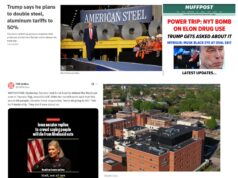Thanks as always to Dr. Mike Silverman, Chair of the Department of Emergency medicine at Virginia Hospital Center, for these helpful updates!
Friday Night Update from the ER in Arlington, VA
A colleague commented to me yesterday that he had 3 COVID patients during his shift with one requiring admission for low oxygen levels. I worked today and while I didn’t see any COVID patients, my colleague admitted a pretty sick COVID pneumonia patient. We have seen a subtle, yet real, increase in the number of patients we evaluate each week and also a slight increase in the percent positivity rate. The BA.2 variant is doubling its prevalence about every 2 weeks and now makes up 34% of new cases according to the CDC. Data from Walgreens has the variant making up 51% of cases. Either way, we have a highly transmissible variant going through the community. Although most experts agree that we’ll see an increase in the number of cases, there’s some disagreement about whether we’ll have a true “surge” or not. Fortunately, we have high levels of protection between vaccination rates as well as those who recently had the Omicron variant over the winter. Additionally, we do have better outpatient treatments now than we did a few months ago. And finally, we have better access to testing. If you’re coughing or feel sick, test yourself and then stay home.
There is some good news from Moderna regarding pediatric vaccines. Currently, Moderna is only available for those >18 though pediatric testing has continued. Moderna reported this week that the 2 dose vaccine series for kids 6 months to 6 years met the study goals and a request for approval is in the works. The main study end point was the level of immune response. The response was found to be similar to the 18-25 year old’s by using a quarter dose compared to a full dose in the young adult group. In the initial adult studies, Moderna was 94% effective at preventing infection. However, for this youngest age group, testing was conducted during the Omicron phase and the vaccine was 44% and 38% effective at preventing infection in the <2 and the 2-6 year old age groups, respectively. The company reported that most breakthrough cases were mild and none of the vaccinated patients developed serious illness. Moderna has also requested its vaccine be approved for 6-11 year olds (who received half of the adult dose). Where it gets interesting is that the general threshold for approval has been set at 50%, however, the FDA approved the Pfizer vaccine for the 6-11 year old’s based on immune response. If my kids were 5 or younger, I would take it versus no vaccine, so I’ll certainly be following this as the FDA and CDC discuss it.
I read with interest an article from last week’s NEJM looking at the potential benefits of a 2nd booster among a healthy population of healthcare workers. Overall, there was an improvement in antibody levels, but only a slight reduction in reducing cases among those who received the extra dose. This led the authors to conclude that there was only “marginal benefit” for a second booster. Older and vulnerable populations were not studied and a second booster is recommended for those who are immunocompromised and are being considered for those 65 and older. A study released in pre-print form in February showed those >60 who had a second booster were less likely to become infected and the rate of severe illness were lower among those who received a second booster. Only 50% of those eligible have received a first booster, so I encourage those who are eligible to get their initial booster.
It was a really busy week, so this is short. Enjoy your weekend.
The Coronavirus is not done with us yet.
Science matters. Get vaccinated (or your booster). Keep a mask handy.
Mike




![Thursday News: “World leaders now enter the White House at their own risk”; “2 Israeli Embassy staff shot and killed in front of Capital Jewish Museum in DC”; GOP Moves to Pass “Monstrous” Bill Which “steal[s] from the poor and give[s] to the rich”](https://bluevirginia.us/wp-content/uploads/2025/05/montage0522-238x178.jpg)









![Monday News: Trump’s Lunacy Pushes China, Russia, India, etc. Together; “Happy Labor Day. Donald Trump and Elon Musk Are Screwing Workers.”; “Where is the [media’s] intense focus on Trump’s failing health?”; ““Trump says he is not a dictator. Isn’t he?”](https://bluevirginia.us/wp-content/uploads/2025/09/montage0901-100x75.jpg)